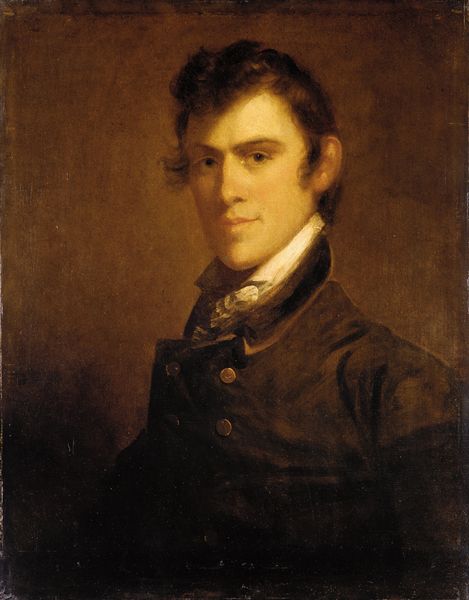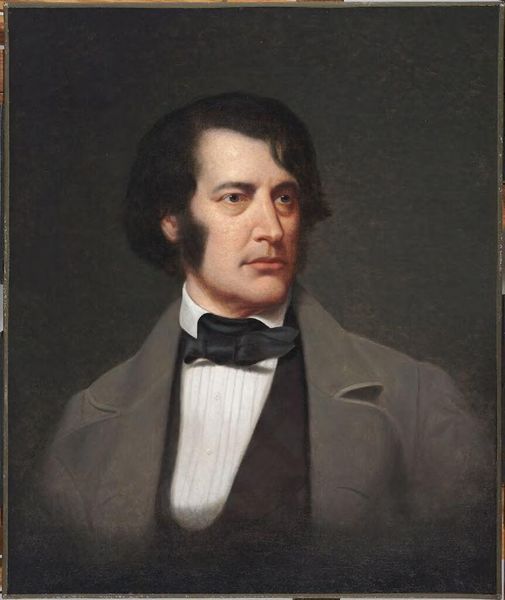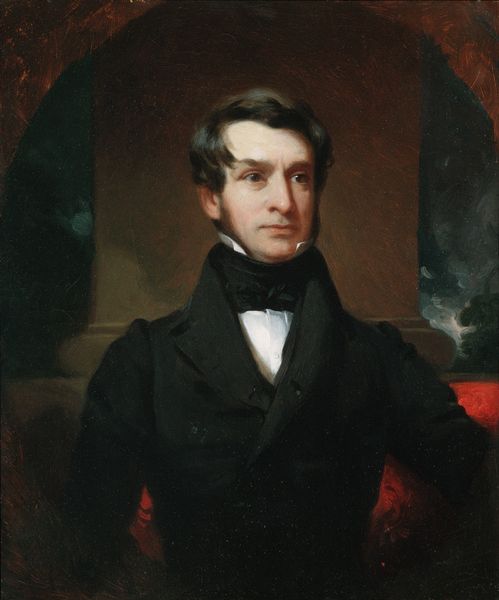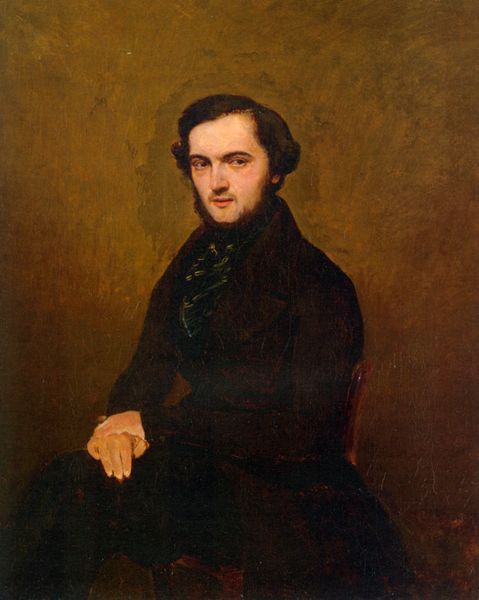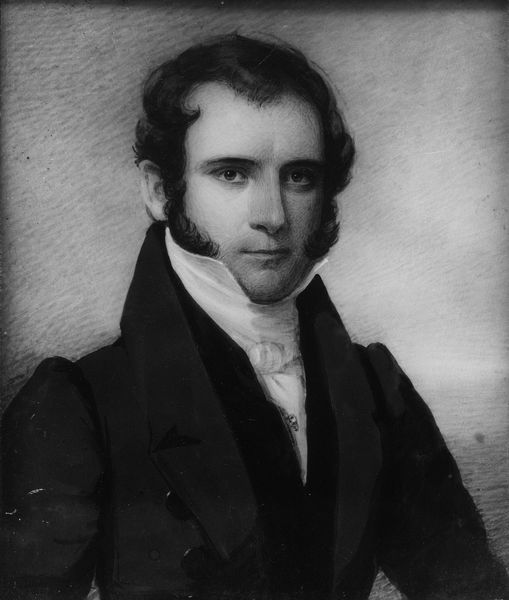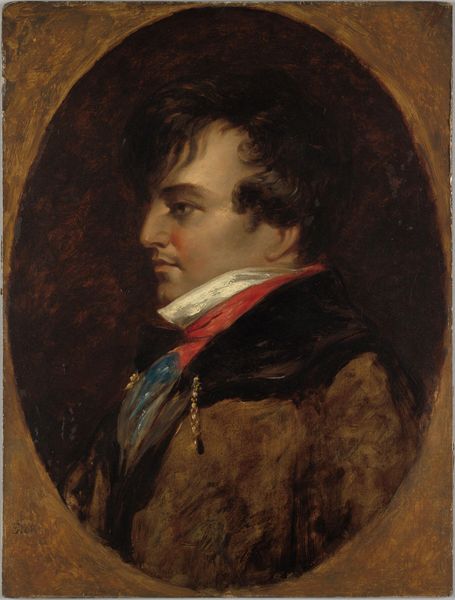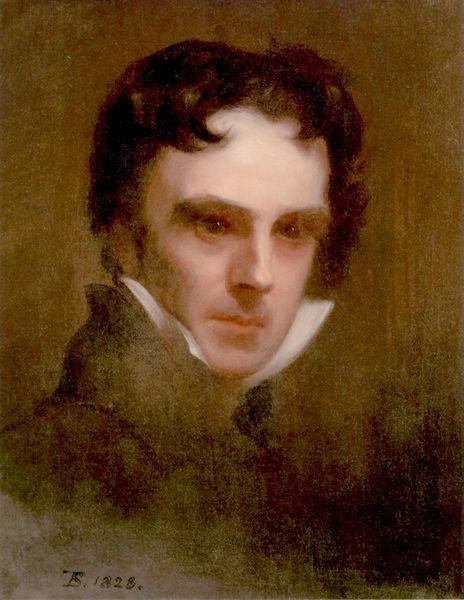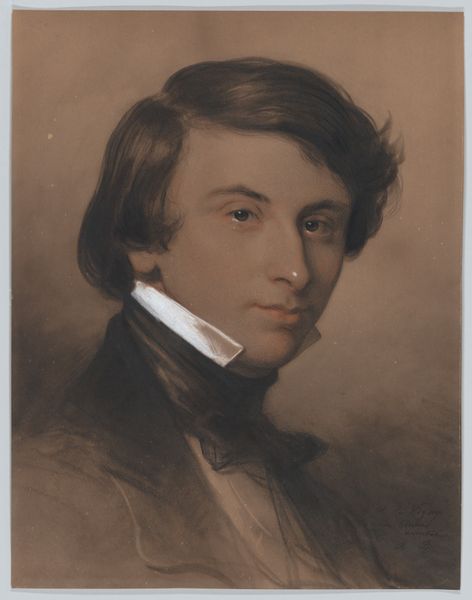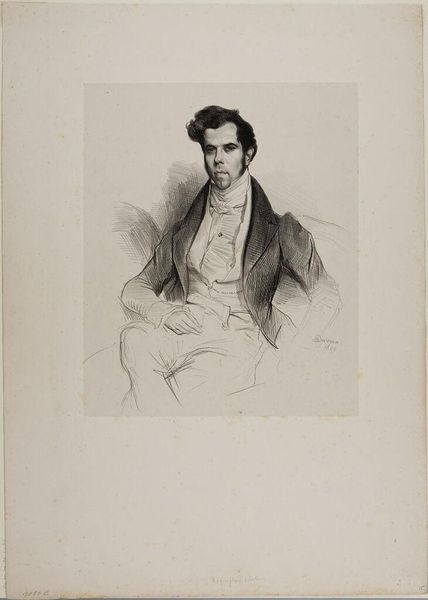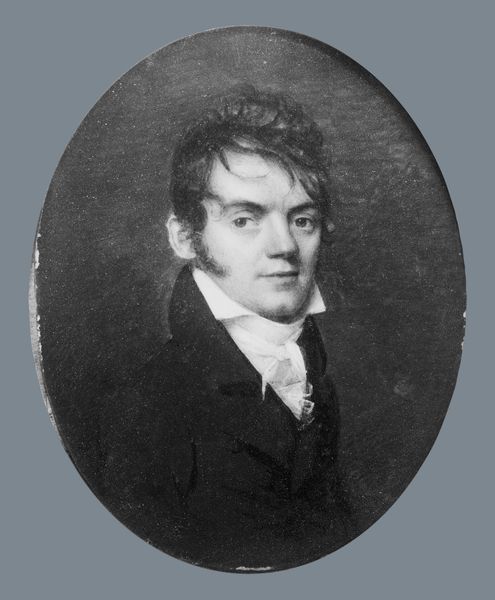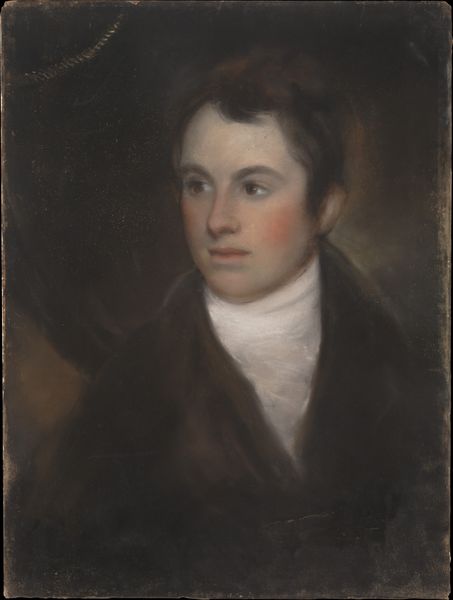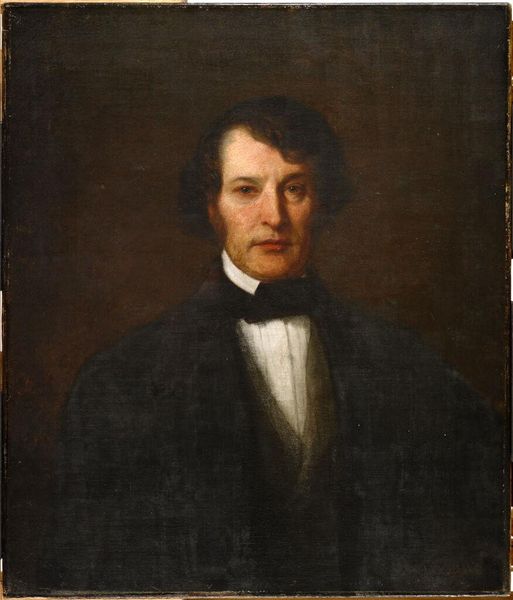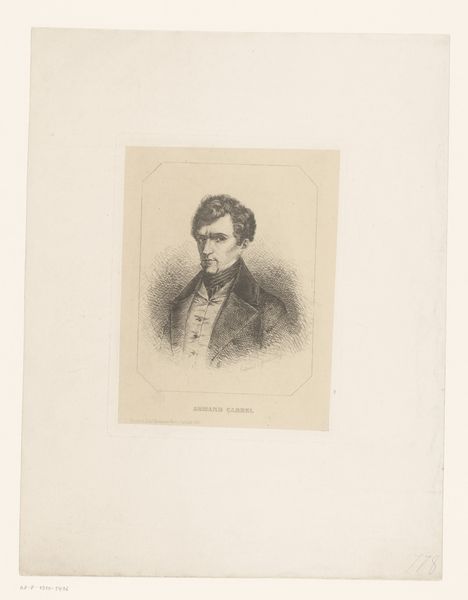
painting, oil-paint
#
portrait
#
portrait
#
painting
#
oil-paint
#
figuration
#
romanticism
#
realism
Copyright: Public domain
Editor: We're looking at Leonardo Alenza's "Portrait of a Gentleman," an oil painting. The subdued lighting and the sitter's intense gaze create a really intimate feeling. How do you interpret the social context of a portrait like this? Curator: This portrait speaks volumes about 19th-century societal expectations. The sitter's dark suit, typical of the bourgeoisie, signifies his aspirations of belonging to a higher class. Look at his almost defiant, direct gaze—could this be a subtle challenge to the rigid social order, or perhaps it embodies the Romantic era’s emphasis on individualism? Editor: That's interesting, I hadn't thought about his gaze as potentially challenging the status quo. So, is the artist commenting on class through the subtle details, like the man's clothes? Curator: Absolutely! The clothing signifies the aspiration, but his expression is ambiguous. Is he fully comfortable in this performative role? Consider the social mobility - or lack thereof - within that time. How much control did individuals really have over their own identity and social standing? It prompts a bigger question of power, performance, and authenticity. Editor: That makes me wonder, did Alenza aim to depict an individual, or to question broader issues? Curator: Perhaps both! He captured a single man, but this representation resonates with the constraints of 19th century social norms. It makes us question, even now, how much of ourselves is shaped by those forces. Editor: Thinking about this portrait in terms of identity and social norms really changes how I see it. Curator: Indeed. And how the dialogue between art and social consciousness is ongoing.
Comments
No comments
Be the first to comment and join the conversation on the ultimate creative platform.
